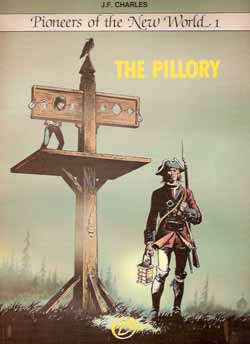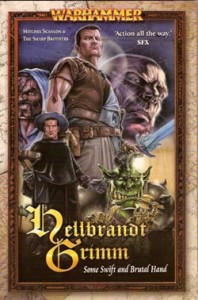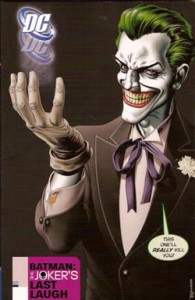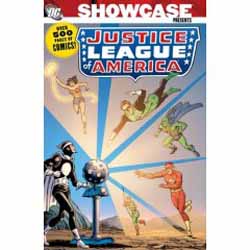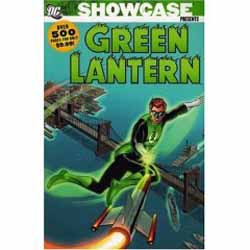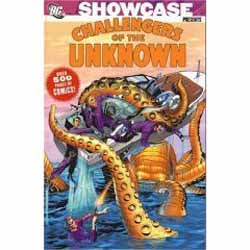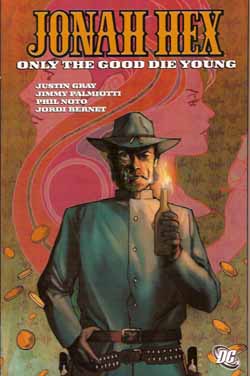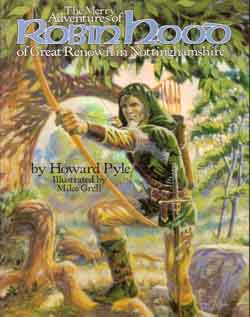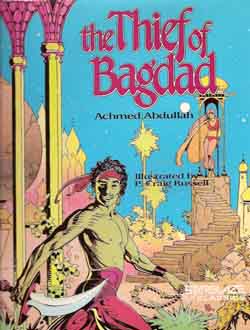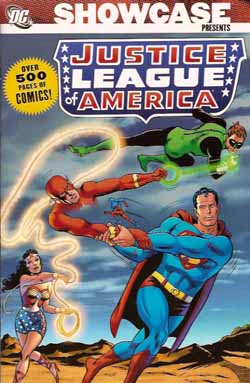
By Gardner Fox, Mike Sekowsky & Bernard Sachs (DC Comics)
ISBN13: 978-1-4012-1203-2
I love these cheap ‘n’ cheerful black and white compendiums of past classics! This second volume collecting the entire run of adventures of “The World’s Greatest Superheroes†comprises issues #17-36, t(he February, 1963 to June 1965 instalments) which bring the readers chronologically to the point where superhero comics would explode across the public consciousness.
‘Triumph of the Tornado Tyrant’ saw a sentient cyclone that had once battled the indomitable Adam Strange (in Mystery in Space #61- or Adam Strange Archives volume 1, ISBN: 1-4012-0148-2) set up housekeeping on an desolate world and ponder the very nature of Good and Evil, before realising that it needed the help of the Justice League to reach a survivable conclusion. Teaser Alert: As well being a cracking yarn, this story is pivotal in the development of the android hero Red Tornado…
Issue #18 saw the team summoned to a subatomic world by three planetary champions whose continued existence threatened to destroy the very world they were designed to protect. ‘Journey to the Micro-World’ found our heroes compelled to defeat opponents that were literally unbeatable. Another perplexing riddle was posed in ‘The Super-Exiles of Earth’ when unstoppable duplicates of the team go on a crime-spree and force the world’s governments to banish the heroes into space.
‘The Mystery of Spaceman X’ was an interplanetary adventure and a cunning brainteaser, with lots of action that serves to whet the appetite for the genuine pivotal classic that followed.
‘Crisis on Earth-One’ (Justice League of America #21) and ‘Crisis on Earth-Two’ (#22) combine to become one of the most important stories in DC history and arguably one of the most important tales in American comics. When ‘Flash of Two Worlds’ introduced the concept of Infinite Earths and multiple heroes to the public, pressure began almost instantly to bring back the lost heroes of the “Golden Ageâ€. The editorial powers-that-be were hesitant, though, fearing that too many heroes would be silly and unmanageable, or worse yet put readers off. If only they knew what we know now!
The plot sees a team-up of assorted villains from each Earth plundering at will and trapping our heroes in their own HQ. Temporarily helpless the JLA contrive a desperate plan to combine forces with the champions of a bygone era! It’s impossible for me to be totally objective about this saga. I was a drooling kid in short trousers when I first read this story and the thrills haven’t diminished with this umpty-first re-reading. This is what superhero comics are all about!
Faced with the impossible task of topping that, creative team Gardner Fox, Mike Sekowsky and Bernard Sachs rose to the challenge with the eccentric outer-space thriller ‘Drones of the Queen Bee’. As the team escaped enslavement to the alien seductress, the continuity bug was growing, and the mention of the individual cases of members would become a mainstay of most future issues.
Alien despot Kanjar Ro returned in ‘Decoy Missions of the Justice League’ a sinister world conquest plot that featured another guest-shot for off-world adventurer Adam Strange and a perplexing mystery with planet-shaking consequences temporarily baffled the team in the rousing romp ‘Outcasts of Infinity!’ Issue #26, ‘Four Worlds to Conquer’ dealt with an insidious revenge plot of the three-eyed alien Despero whilst a much more metaphysical menace assaulted the team in ‘The “I†Who Defeated the Justice League’. Although the deadly android Amazo was also on hand to add some solid threat to the proceedings.
The charmingly naff Head-Mastermind and a bunch of second-string super-villains tried to outfox the League in #28’s ‘Case of the Forbidden Super-Powers’, but not so easily defeated or forgotten are the next two tales. ‘Crisis on Earth-Three’ and ‘The Most Dangerous Earth of All!’ reprised the team-up of the Justice League and Justice Society, when the super-beings of yet another alternate Earth discovered the secret of multiversal travel. Unfortunately Ultraman, Owlman, Superwoman, Johnny Quick and Power Ring are villains on a world without heroes, and see the costumed crusaders of the JLA and JSA as living practise dummies to sharpen their evil skills upon. With this cracking two-part thriller the annual summer team-up became solidly entrenched in heroic lore, giving fans endless joys for years to come and making the approaching end of school holidays less gloomy than they could have been.
(A little note: although the comic cover-date in America was the month by which unsold copies had to be returned – the off-sale date – export copies to Britain travelled as ballast in freighters. Thus they usually went on to those cool, spinning comic-racks the actual month printed on the front. You can unglaze your eyes and return to the review proper now, and thank you for your patient indulgence.)
JLA #31 saw the induction into the team of Hawkman, who would be the last successful inductee until Black Canary joined the team in #75. ‘Riddle of the Runaway Room’ found an alien wish-granting machine in the hands of second-rate thug Joe Parry, who nonetheless made life pretty tough for the team before their eventual victory. The visually impressive Hawkman must have been popular with the creators, if not the fans, as he was prominently featured in all but one of the next half-dozen adventures. ‘Attack of the Star-Bolt Warrior!’ introduced the uncanny villain Brain Storm who attacked the League to avenge his brother who had been murdered by one of their number!
The universe was again at stake in the time-travelling thriller ‘Enemy from the Timeless World’ and a persistent old foe had another go in #34’s ‘The Deadly Dreams of Doctor Destiny!’, a thriller packed with an army of guest-villains. The team were attacked by their own clothes in the supernatural adventure ‘Battle Against the Bodiless Uniforms’, a fall-back plan by the demons Abnegazar, Rath and Ghast, which had been slowly percolating since the end of JLA #11.
This volume closes with a heart-warming and poignant fable. ‘The Case of the Disabled Justice League’ saw the team raise the morale of despondent kids with disabilities by overcoming physical handicaps to defeat the returning Brain Storm. This tale was in fact inspired by ‘A Place in the World’, a Justice Society adventure from 1945 (All Star Comics #27) produced at a time when returning servicemen disabled in combat were becoming an increasingly common sight on the streets of America.
These inexpensive compendiums are an absolute gift for modern fans desperate to catch up without going bankrupt. They’re also the perfect gift for youngsters needing an introduction to a fabulous world of adventure and magic. Of all the various reprint editions and formats available for such classic material, these monochrome tomes are my very favourite.
© 1963, 1964, 1965, 2007 DC Comics. All Rights Reserved.

